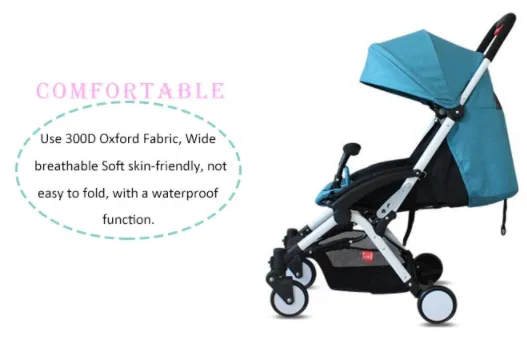
- Afrikaans
- Albanian
- Amharic
- Arabic
- Armenian
- Azerbaijani
- Basque
- Belarusian
- Bengali
- Bosnian
- Bulgarian
- Catalan
- Cebuano
- Corsican
- Croatian
- Czech
- Danish
- Dutch
- English
- Esperanto
- Estonian
- Finnish
- French
- Frisian
- Galician
- Georgian
- German
- Greek
- Gujarati
- Haitian Creole
- hausa
- hawaiian
- Hebrew
- Hindi
- Miao
- Hungarian
- Icelandic
- igbo
- Indonesian
- irish
- Italian
- Japanese
- Javanese
- Kannada
- kazakh
- Khmer
- Rwandese
- Korean
- Kurdish
- Kyrgyz
- Lao
- Latin
- Latvian
- Lithuanian
- Luxembourgish
- Macedonian
- Malgashi
- Malay
- Malayalam
- Maltese
- Maori
- Marathi
- Mongolian
- Myanmar
- Nepali
- Norwegian
- Norwegian
- Occitan
- Pashto
- Persian
- Polish
- Portuguese
- Punjabi
- Romanian
- Russian
- Samoan
- Scottish Gaelic
- Serbian
- Sesotho
- Shona
- Sindhi
- Sinhala
- Slovak
- Slovenian
- Somali
- Spanish
- Sundanese
- Swahili
- Swedish
- Tagalog
- Tajik
- Tamil
- Tatar
- Telugu
- Thai
- Turkish
- Turkmen
- Ukrainian
- Urdu
- Uighur
- Uzbek
- Vietnamese
- Welsh
- Bantu
- Yiddish
- Yoruba
- Zulu
Nov . 21, 2024 14:34 Back to list
powered bicycle
The Rise of Powered Bicycles A New Era of Urban Mobility
In recent years, the landscape of urban transportation has witnessed a significant transformation. Among the various alternatives to traditional commuting methods, powered bicycles, often referred to as e-bikes, are emerging as a popular choice for urban dwellers. This article explores the features, benefits, and challenges associated with powered bicycles, and how they are shaping the future of mobility in cities around the world.
What are Powered Bicycles?
Powered bicycles are essentially bicycles that are equipped with an electric motor, which assists the rider in pedaling. This distinction is crucial, as it differentiates them from scooters or electric motorcycles. E-bikes come in various forms, with different levels of motor assistance and battery capacities, catering to diverse needs and preferences. Riders can choose between pedal-assist models, where the motor engages only when the rider is pedaling, and throttle-controlled ones, which allow the rider to accelerate without pedaling.
The Appeal of Powered Bicycles
One of the primary reasons behind the growing popularity of powered bicycles is their ability to make cycling more accessible to a broader audience. For many, the prospect of cycling can be daunting, especially in hilly areas or on longer commutes. The electric motor alleviates much of the physical exertion associated with traditional biking, making it an appealing option for individuals of all fitness levels. This democratization of cycling fosters a healthier lifestyle by encouraging people who might otherwise rely on cars or public transportation to embrace two wheels instead.
Moreover, powered bicycles contribute significantly to reducing urban congestion. As cities grapple with traffic jams and pollution, e-bikes offer a sustainable alternative. They require less space on the road and can navigate through traffic more efficiently than larger vehicles. Furthermore, their lower carbon footprint compared to cars aligns with the growing environmental awareness of urban residents, making e-bikes an attractive choice for eco-conscious commuters.
Economic Benefits
powered bicycle

The economic implications of powered bicycles are also noteworthy. Many cities are investing in infrastructure to accommodate e-bikes, such as dedicated bike lanes and charging stations. This investment not only enhances the existing transportation network but can also stimulate local economies. E-bike riders are likely to visit local businesses more frequently, as they can easily access shops, cafes, and restaurants without the hassles of parking or fuel costs associated with cars.
Additionally, owning a powered bicycle can be a cost-effective alternative to vehicle ownership. With rising fuel prices and maintenance costs, the relatively low expense of purchasing an e-bike, coupled with minimal running costs, makes it a financially appealing option. Users can save money on commuting while enjoying the flexibility that an e-bike provides.
Challenges and Considerations
Despite the numerous advantages, powered bicycles are not without their challenges. Safety remains a significant concern, as the rise in e-bike usage can lead to increased collisions, especially in cities lacking adequate infrastructure. Ensuring proper regulations and safety protocols is essential to protect riders and pedestrians alike.
Moreover, the issue of battery disposal and environmental impact must be considered. While e-bikes are generally more sustainable than traditional vehicles, the production and disposal of batteries pose environmental concerns. The cycling industry must continue to innovate in battery technology, focusing on recycling and sustainability to minimize the ecological footprint.
Conclusion
In conclusion, powered bicycles offer a fresh perspective on urban mobility, providing a sustainable, efficient, and accessible means of transportation. As cities continue to evolve, the integration of e-bikes into the transportation ecosystem presents a multitude of benefits—from health and environmental advantages to economic incentives. While challenges remain, the potential for powered bicycles to reshape urban landscapes is undeniable. As we embrace this new era of commuting, it is essential to foster a culture of safety, sustainability, and inclusivity, ensuring that powered bicycles can thrive as a cornerstone of modern urban life. With the right measures in place, powered bicycles can indeed pave the way for a cleaner, healthier, and more connected future.
-
The Ultimate Kids' Four-Wheeler Experience
NewsJul.09,2025
-
The Ultimate Guide to Mountain Bikes: Gear Up for Your Ride
NewsJul.09,2025
-
The New Age of Cycling: Electric Bikes for Every Rider
NewsJul.09,2025
-
The Best Kids Bicycles: Ride in Style and Safety
NewsJul.09,2025
-
The Best 3-Wheel Scooters for Kids: Fun, Safety, and Adventure
NewsJul.09,2025
-
Revolutionize Your Ride: Affordable Electric Bikes
NewsJul.09,2025
-
Finding the Perfect Mountain Bike for Every Rider
NewsJul.09,2025



